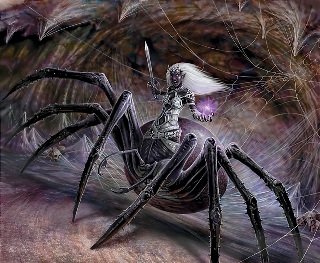![]()
 Poison – a classic debilitator and killer, found throughout all editions of Dungeons & Dragons. Seventeen colorful and insidious poisons dot the D&D 4e landscape, with all but one – the truly vicious Pit Toxin – found throughout heroic and paragon level play.
Poison – a classic debilitator and killer, found throughout all editions of Dungeons & Dragons. Seventeen colorful and insidious poisons dot the D&D 4e landscape, with all but one – the truly vicious Pit Toxin – found throughout heroic and paragon level play.
However, in 4e, the there are only brief rules and advice in the DMG on how to best include poisons in your games, whether actively as a player or as part of encounters or adventures as the DM.
Looking for some ideas? Here are some considerations for poison use in your very next game – from attacks and encounters to entire adventures.
Delivery
Coating weapons and traps with poison. Lacing lacing food or drink with venom. Filling the air with toxic gas. These are the methods by which poison is typically delivered across multiple fiction and gaming genres, fantasy included.
The party might find some vials, containers, or even crates or pools of poison. Then it’s just a matter of spending a few seconds (standard action) lathering up your blades or arrows with it, giving your next attack within the next few minutes an added, painful punch. In a way, poisons in 4e can work much like the effects applied by diseases, certain terrain powers or environmental effects, or feat modifications to your attack powers.
Similarly, fantastic terrain or similar features of an encounter area can also include dangerous poisons. For example, a long-befouled fountain that spits poison makes for a great place to coat those orc axes or arrows with either Deathjump Spider or Stormclaw Scorpion Venom. A primal place of power may be filled with mushroom-scented Dark Toxin, clouds of poisonous gas or spores emitted by rare mushrooms. Perhaps the spores are a natural defense against monsters who might defile the area, or also serve as protection for the pack of Dark Stalkers who roam nearby.
Transport
D&D hasn’t really ever talked much about how massive amounts of poisons and toxins are stored, shipped and delivered across great distances, but the important thing to remember is that they usually come with special considerations like safe handling, protection and security, and any precautions to preserve potency. In a way, safe delivery and transport of valuable poisons is much like delivery of other more common valuable trade goods, except that the stakes here are understandably higher.
Whole encounters and adventures can be built on the fundamental need to keep these precious poisons – from the simpler creature venom to toxins with more disturbing origins such as the Blood of Zehir or Mind Scorch – safe and sellable for the next buyer.
For example, a ship sails in the morning across the sea, loaded with valuable mundane items, foodstuffs, and – perhaps unbeknownst to the party – barrels filled with Deathblade, also known as Demonweb Terror Venom. The voyage is rudely interrupted by The Marilith, a pirate vessel whose captain and crew caught wind of the ship’s wealth, specifically the fortune the poison alone would fetch! The pirates plan to keep a large “sample” of their own, of course, to further enhance their reputation and entrench their domination in the seas.
Motivations
The mention of a buyer brings us to the most important point surrounding poison use in your D&D campaign – purpose. The use of poisons usually suggest at least questionable or wicked motivations on the part of the buyers, providers or both. When in doubt, look to the ecology and culture of the creatures or monsters involved for inspiration on motivations surrounding poison use.
Drow Poison is infamous for a reason – this classic D&D toxin renders foes unconscious, and in the slavery-riddled dark world of the wicked drow, being able to fell strong monsters and adventurers alike and then sell or absorb them into slavery is a primary motivation for dark elves.
The aforementioned pirates of The Marilith might want the poison for their own use or for simple profit – perhaps through some nefarious buyer who paid the pirates well to seize it.
Perhaps that buyer is a pit fiend, whose personal cache of crimson Pit Toxin, sizzling inside half-a-dozen magically sealed and hot-to-the-touch obsidian crystals, is part of the treasure the heroes might earn should they track down and defeat this devil and his cruel schemes.
What’s Your Poison?
How rare is poison and poison use in your 4e games? How have you used or included it in encounters and adventures? Do you have any favorite poisons, poison powers, or monstrous poison attacks? In which modes or parts of the game does poison feature best – when is it most frightening or effective?
[…] Goods (i.e. stolen, poison, […]
[…] Poison Access and Disease Inclusion (i.e. Befouled Fountain, Barrels of Poison; Moon Frenzy, Mummy Rot) […]